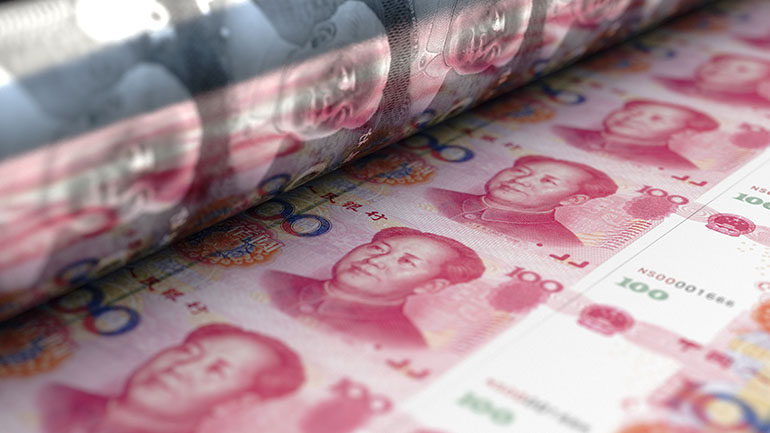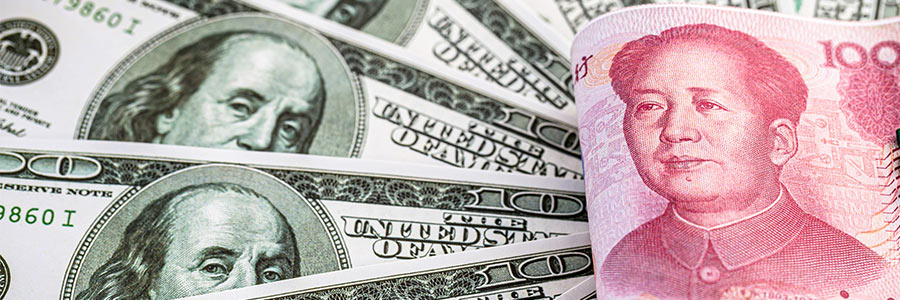China's Stimulus: The East Wind Is Here
By: Alex Loo
Oct. 11, 2024 - 7 minutes 30 seconds
Overview:
- Chinese authorities combine policy efforts and a consumer stimulus plan that could take the country in the right direction.
- China's fiscal and monetary policy aims to rebalance the economy while addressing underlying structural issues.
- Leaders backed it up quickly with financial stimulus, supporting the real estate market and addressing long-term unemployment.
- The intention is to target consumer sentiment and promote consumption to improve economic growth.
This Time It's Different
We believe that China's recently announced stimulus measures were a watershed moment for the Chinese economy. The country's leaders are committed to spur a turnaround in consumer sentiment and the growth outlook. The haste and magnitude of the policy rollouts as well as the change in communication tactics surprised us.
What's different this time for the economic outlook:
- Chinese leaders made their strongest policy pledge on fiscal and monetary policy.
- A consumer-focused stimulus strategy to re-balance the economy more towards services.
- A ramp-up in efforts to tackle the underlying structural issues.
On top of this, we expect the Ministry of Finance to announce a new fiscal package of CNY4 trillion (US$569 billion), equivalent to 3.2% of GDP, to support the points above and to complement the monetary easing.
Relative to the 2008 stimulus of 12.5% of GDP, this is not a fiscal "bazooka", but a consumer-centric programme could still pay off. If successful, a normalisation of China's high savings rate could trigger consumption gains and bigger economic multiplier effects. We expect asset price recovery and aggressive monetary stimulus to lift GDP growth for 2024 to 4.9% (prior: 4.7%). For 2025, the full impact of the fiscal stimulus and greater monetary stimulus should filter through and anchor growth in the 5% region.
The jury is still out if the private sector buys into Chinese leaders' narrative shift (especially the consumer) and investors will watch China's Q4 retail sales and property prices to gauge the success of the policy moves. Longer-term, the flurry of stimulus suggests that China is determined to hold economic growth steady around 5% and to accelerate its push toward rebalancing.
President Xi Brings the East Wind
Our initial misgivings about the People's Bank of China (PBoC)'s actions were best summarized by the famous Chinese proverb, "Everything is Ready Except the East Wind", which implies that fiscal stimulus was the missing piece of the puzzle. President Xi and Chinese leaders provided the missing piece (the East Wind) in a swift follow-up, pledging an increase in the "intensity of counter-cyclical adjustment of fiscal and monetary policies" at the September Politburo meeting. This is a big change in tone from the July statement which only called for "proactive fiscal policies and prudent monetary policies".
Leaders are throwing their unequivocal support behind the property market, making their most direct comments yet by calling for the "real estate market to stop falling and stabilize". More importantly, there is a bigger focus on consumption and support for the long-term unemployed now, which firmly reinforces the long-term economic strategy for China post-Third Plenum.
Fiscal Salvo Incoming
We expect the Ministry of Finance to announce a new fiscal package soon of CNY4 trillion (US$569 billion), equivalent to 3.2% of GDP. The funds will likely be fully raised through the proceeds of ultra-long special sovereign bonds (special China Government Bonds (CGBs)). We also expect tax cuts for households and firms as well as targeted employment subsidies. As we highlighted earlier in the year, the Ministry of Finance has shifted its fiscal strategy and recognized that the central government should shoulder more debt instead of local governments.
China Has A Low Central Government Debt-to-GDP Ratio Relative to Other Advanced Economies
In the Politburo September Statement, leaders made clear that additional fiscal stimulus will accompany the aggressive monetary easing. And a Reuters story on the same day reported that officials are planning CNY2 trillion (US$249 billion) of fiscal stimulus for the economy. We reckon authorities can take a step further providing another CNY1 trillion to mop up housing inventory after leaders called for property prices to "stop falling and stabilize". Also, factoring in Bloomberg's article that reported China will inject CNY1 trillion of capital into state banks through special CGBs, this brings the total fiscal package to CNY4 trillion.
Special CGBs issuance is likely to occur in early Q4 with the proceeds likely disbursed late Q4 and in Q1'25. As such, the fiscal impact is a 2025 story, which is critical considering that China may face bigger growth headwinds from trade conflicts with developed economies post U.S. election.
How Does This Round of Chinese Stimulus Compare with Prior Stimulus?
Tracking the Third Plenum's pledge to promote a "more balanced" development and to "actively expand domestic demand", Chinese policymakers are ditching their usual playbook of directing fiscal stimulus to manufacturing, exports and investments to juice economic growth. Now, authorities are aiming to reverse consumer sentiment and promote consumption. Tackling the property market and resolving the high youth unemployment is a good start.
Supply-Side Interventions Work Better for Property
Authorities are pulling out the stops once again, but we see supply-side interventions as the most effective approach to stem the rout in property prices. Demand-side policies (e.g., cutting downpayment, easing homebuying curbs) may be less impactful as households are unwilling to re-leverage in such an uncertain economic situation.
Hence, if authorities provide CNY1 trillion in fiscal funds (possibly through a property stabilisation fund) and allow local governments to use their special bond proceeds to purchase unsold housing which tantamount to CNY1.33 trillion, we reckon this should suffice for now to reduce the existing supply overhang, albeit much less than the CNY6.6 trillion/US$930 billion over four years proposed by the International Monetary Fund (IMF) to mop up the property market supply.
First Top-Down Guidance to Support Labour Market
Youth unemployment rose to 18.8% in August reflecting significant labour market slack and possible skills mismatch among college graduates. Recall that China's universities churn out over 10 million graduates each year with most favouring white-collar jobs, which are in short supply as China technocrats focus on prioritizing modern industrialization.
To tackle this, the State Council issued its most detailed guidance to support the labour market, outlining 24 key points. This is the first guiding document on promoting employment issued at the central level. The structural issue of high youth unemployment is on authorities' radar and a fiscal response is underway.
Supercharging Financial Markets
The PBoC's stimulus salvo is also being touted in onshore financial media as the strongest "Three Arrow" policy (stabilize growth, stabilize property, stabilize financial markets) to restore market confidence.
Governor Pan provided dovish forward guidance pledging to lower interest rates and Reverse Requirement Ratio (RRR) cuts further and – if true – would rival the aggressive monetary easing in past downturns which were over a prolonged period.
The PBoC also got creative in financial engineering through its inaugural swaps facility of an initial tranche of CNY500 billion (US$71 billion) which provides onshore institutions with as much liquidity as needed to buy equities. The PBoC is implicitly placing a put on Chinese equities and PBoC Governor Pan further flagged possible expansions.
PBoC is determined to engineer an equity market recovery as they know that stronger equity performance and increased equity market activity can instil confidence in corporate firms which can in turn spur private investment that has been lacklustre YTD at -0.2% y/y.
Finally Ahead of the Curve?
Naysayers have pointed to authorities' previous failed stimulus efforts and China's problematic structural issues as reasons to fade this rally. However, the concerted policy efforts and the consumer stimulus plan indicate that authorities might be ahead of the curve this time.
Resolution of China's structural issues (e.g., overinvestment, underconsumption and inadequate social safety nets) will be a painful economic transition spanning several years. However, if there is no rebalancing towards consumption, IMF expects diminishing productivity and an aging population to drive China's growth lower to ~3.3 percent by 2029.
Thus, Chinese technocrats are accelerating the structural transition towards consumption, using central's government balance sheet. The aim is to avoid the low 3% growth scenario longer-term and achieve President Xi's aim of doubling the economic aggregate or per capita income by 2035 in the 14th Five-Year Plan (2021-2025). This implies an annual average GDP growth rate of around 4.7% from now till 2035.
Looking ahead, it is likely that Q3 GDP (released on 18 Oct) is a foregone conclusion with our forecast at 4.5% y/y or lower. Investors may look past this and instead examine the monthly economic data from October onwards to judge the effectiveness of the stimulus measures. But for now, Chinese authorities have persuaded China equity investors that China's policy intentions are in the right direction.
Subscribing clients can read the full report, China's Stimulus: The East Wind is Here, via the TD One Portal






